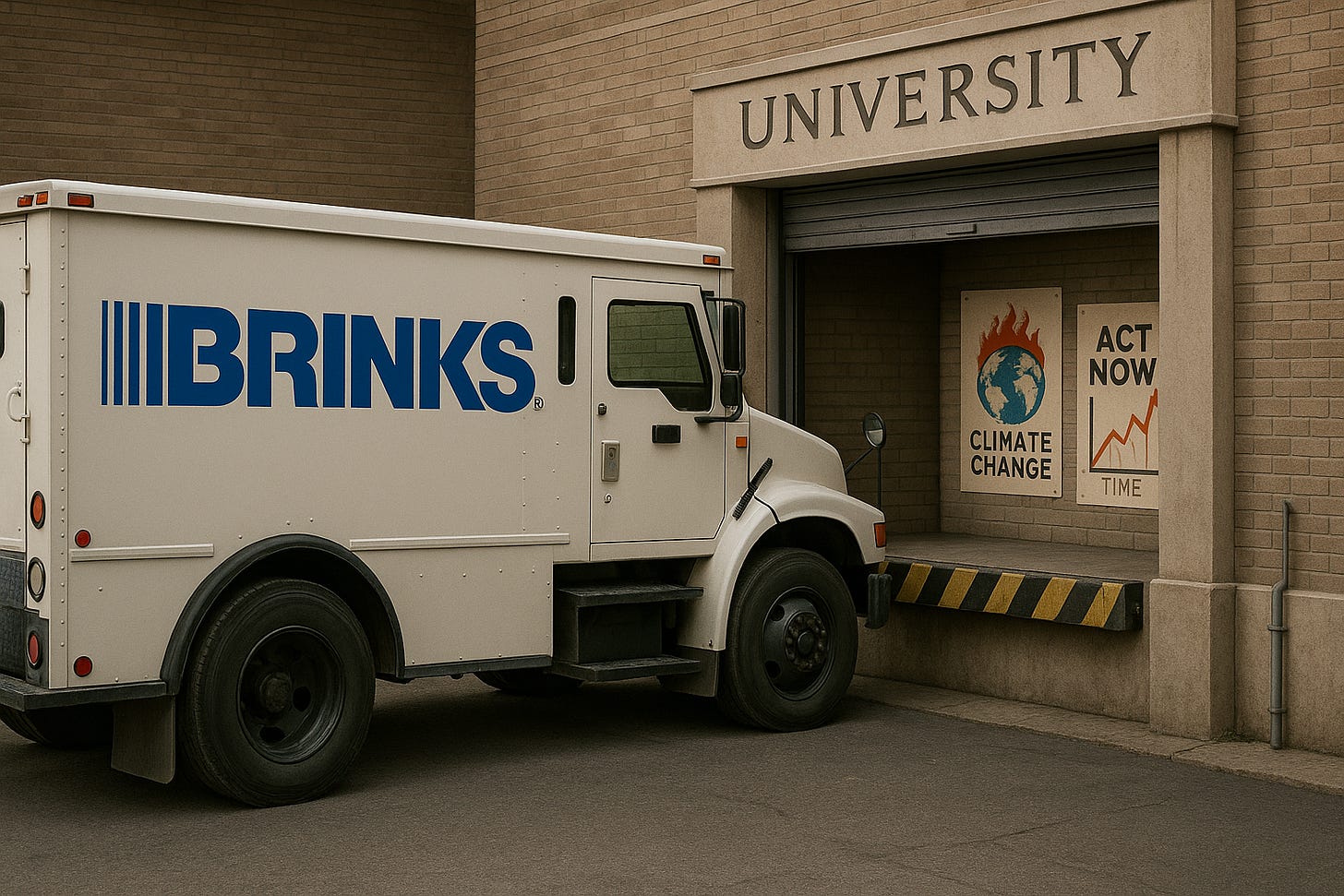The Climate of Uncertainty
How many times can they be wrong before we stop listening?
The Climate of Uncertainty
By Jim Reynolds | www.reynolds.com
I. The Problem with Certainty
Science is supposed to be a method of discovery, not a cult of conclusions. Yet the modern climate industry has turned uncertainty into dogma. What was once hypothesis has been converted into creed. The models don’t just predict; they preach.
II. The Faith in Forecasting
Governments fund it, universities echo it, media sell it, and the public absorbs it as gospel. But underneath the layers of graphs and jargon lies a fragile truth: we have never successfully modeled a planet before. We’ve barely modeled a city block. To simulate an atmosphere is to gamble on trillions of data points—each one sensitive to forces we don’t fully grasp.
III. The Great Complication
We can predict that Bakersfield will hit 102 in July. We can predict that gas runs out when the tank is empty. We can even predict animal behavior with some success. But climate? Climate is complexity itself—hundreds, maybe thousands, of variables interacting, colliding, and mutating across scales of time and geography. Add a single one-off event—a volcano, a meteor, or a new variable the modeler didn’t imagine—and the whole simulation collapses. Whatever killed the dinosaurs wasn’t in anyone’s forecast. (Hello, T. Rex.)
IV. Constants and Variables
But what is a variable? And what is a constant? These are the sacred objects of simulation—the clay from which we build our little universes. Modelers call constants “knowns”: water freezes at 32°F, gravity is 9.8 m/s², the sun delivers X joules per square meter. We call them constants because we want them to be. But they’re not.
Water doesn’t freeze at 32°F if the pressure shifts. It doesn’t freeze that way at altitude. It doesn’t freeze that way if the composition changes, or if it’s moving, or if its neighbors carry a different charge. Every “constant” is a polite fiction—a fragile average pretending to be eternal.
Now turn to the variables, the wild cards we admit are in motion. How much do they change? How quickly? What happens when two of them—say, ocean salinity and upper-atmosphere wind shear—collide in ways the code never imagined? Can three or four variables stack into a feedback loop that rewrites the rest? The honest answer is: we don’t know. Because the moment you define a system with more than a handful of interactive variables, the model becomes a hall of mirrors. Everything depends on everything else. And yet we pretend we can predict this symphony centuries out—when we can barely model next week’s weather.
That’s not science; that’s wishful arithmetic in the service of fear.
V. The Incentive Loop
Science used to be about curiosity. Now it’s about contracts. Universities, NGOs, and agencies all compete for the same pot of climate money. And just like any grant-based system, you don’t get paid for saying, we’re fine. You get paid for saying, we’re doomed but not yet funded. Governments buy the panic they want, institutions sell it, and the press resells it as virtue.
VI. The Business of Belief
When the models disagree, the funders don’t care—they cherry-pick the ones that match the policy. That’s why “consensus” became a marketing word, not a scientific one. Consensus is what you announce when replication fails but the check clears anyway. It’s also why the predictions never match reality: because reality isn’t grant-eligible.
VII. The Complexity Gap
Real systems—oceans, jet streams, forests, solar cycles—don’t obey budgets or deadlines. They pulse, drift, and reset in rhythms older than language. To capture that on a spreadsheet is like bottling jazz funk in a test tube. We can detect patterns, but we can’t control them. The arrogance is thinking we ever could.
VIII. The Modesty of Reason
Real science starts with I don’t know. Climate orthodoxy starts with we do. One is humble; the other is profitable. But the truth remains: we don’t yet know how much of the warming is natural, how much is industrial, and how much is just noise in the vast churning system we call Earth.
The more we learn, the less control we have. And the more control we claim, the less we learn. That’s the paradox honest scientists live with—and bureaucrats can’t afford.
Belief has replaced curiosity. Panic has replaced proportion. Models have replaced minds.
And yet, under it all, the world keeps turning, green shoots rising through asphalt, clouds reshaping the math faster than we can graph it. The climate isn’t broken. Our arrogance is.
IX. The Cold Front Called Reality
So there you have it. We really don’t know much about predicting the future of climate. We’re just good at making things up—especially when somebody pays us to do it. But that’s about it.
So ask yourself: would there be any measurable change in future climate if every dollar of climate-forecasting money stopped tomorrow? Would the Earth even notice? Or would only the labs and agencies—those built on speculation and government grants—feel the chill of a sudden, unexpected cold front called reality?
Once again, T. Rex is wiggling his terrifying little arms behind the jungle canopy—mocking our models, and waiting for his next extinction event to be discovered. Because if Jurassic Park was about scientists playing God with biology, this story is about scientists playing God with prediction—and both end the same way: a gate creaks, something growls, and the hubris gets eaten.
And somewhere, in the flickering light of the control room, a torn Jurassic Park banner flutters down in the lobby—another warning unheeded, another experiment escaped.





Jerry, you are correct in your questioning of all climate predictions. It is a racket, like many other government funded scams. A closed loop of preordained predictions. Bill Gate’s comments yesterday resulted in shocks throughout the climate community. First bit of truth Bill has uttered in years. Ok. That’s an exaggeration. Jim
Why does the government even bother to predict"cllimate change"? That's the real question. Okay, it's nonsense! But if sold, along with the need to eliminate fossil fuels, consider the long term consequences. Abandon gasoline to power cars, require only electricity...which is inherently limited and can be shut off [by the govt]. So people will have to move into cities, no more long-distance traveling. Better control by gov't...so gov't can better deliver the comfort, convenience and services that everybody needs just to survive. Independence is an inherent challenge to gov't. Remember, our Constitution is old fashioned, too restrictive, irrelevant, needs to be re-written by the wise[er] men of today.